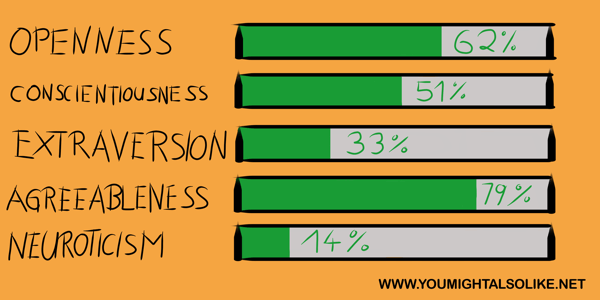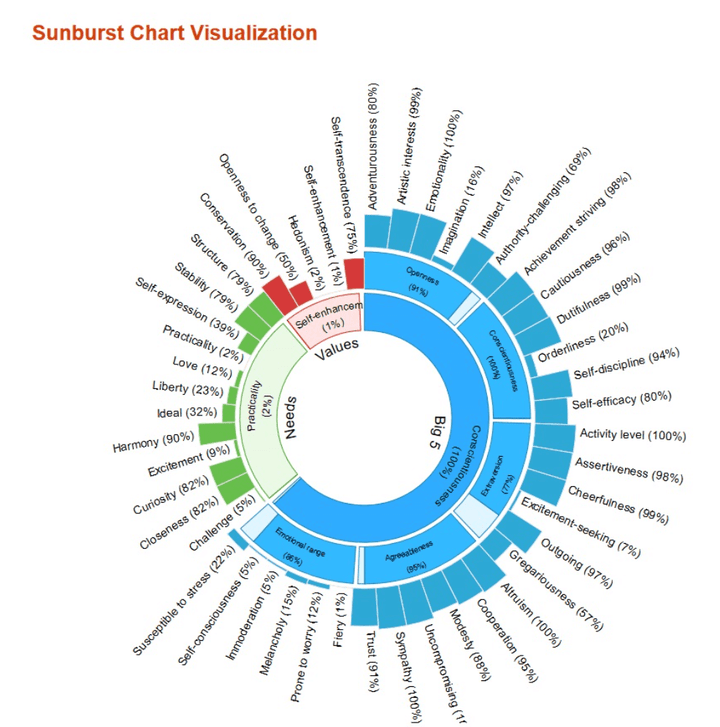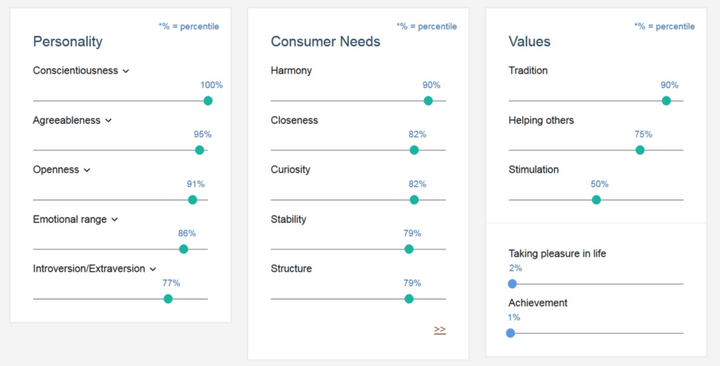
The German article “Ich habe nur gezeigt, dass es die Bombe gibt” by the Swiss publication Das Magazin has been widely circulating these last days and has been called the most important article of the year.
Why? Because it promises an answer to one of the most pressing questions: How could Trump win the presidential election?
The article claims that big data and micro targeting are responsible for the win.
In particular, the influence of the big-data company Cambridge Analytica is cited and its involvement in elections of Brexit and the presidential election in the United States.
If you haven’t already read the article, here is a very short summary: Cambridge Analytica analyzed voters’ behaviour and personality. The company claims to be able to predict a person’s personality from their likes on Facebook and Twitter and their written interactions. The company then got involved in planning micro-targeted content in order to help Trump win the election.
Since the article’s widespread circulation, a lot of media outlets have questioned the claims made here, here, and here.
Many people’s main criticism is that the Trump phenomenon has multiple reasons and cannot be explained by big data and micro targeting alone. Also, who knows if Clinton did not use micro-targeting in the campaign as well, as it was suggested here.
I don’t want to get involved in the particular discussion of whether or not Trump got elected because of Cambridge Analytica.
Instead, I want to talk about personality analysis and its possible impact on our future. Compared to what is happening in e-commerce these days, Cambridge Analytica seems to be just a tiny slice of the iceberg. An iceberg with a lot of brainpower and research built by IBM and customer marketing companies.
Micro-targeting is not new.
When it comes to e-commerce, micro targeting is not new. What seems to be new, however, is advertising opinions, news, and fake news for political reasons.
E-commerce companies have always wanted to know their customers inside out and we were all kind of okay-ish with it, right? We all have customer loyalty cards, and book and buy a lot of stuff online. If you were like me you would think, “Whatever, maybe they know that I like the yogurt with chocolate chips in it, so what?”
What seems to be fairly new, however, is that companies can now not only use buyer behaviour and analyze all that stuff, but that they can construe a deep personality portrait, which not even your spouse would be able to come up with so accurately.
Personality analysis, however, is not only done by Cambridge Analytica. The far bigger player is likely IBM.
The reason for personality analysis seems obvious:
Companies want to learn as much as they can about us: which products we use, our buying behaviors, and which marketing messages we respond to. Even more than that, they want to know our deepest selves: our hopes, dreams, fears, anxieties, values, and needs.
While two people might share the same age, education, work history, and socioeconomic backgrounds, their personalities might differ vastly. This is where personality analysis comes in.
The danger of it is this:
If e-commerce can use big data, machine learning, and personal analysis, then everyone can. From a technology standpoint it doesn’t matter if you are advertising a new yoghurt or fake news to your carefully segmented audience, the technology behind it is the same.
But before delving deeper into this, I want to show you how IBM’s personality model compares to the one Michal Kosinski and his team developed at the Psychometrics Center at Cambridge University. I’ll also discuss why IBM’s personality model feels more powerful.
IBM’s personality models vs. Kosinski’s personalisation engine
Kosinski and his team used the Big Five Model to categorize people according to their personalities. They analyzed people’s behavior along these characteristics. The Magazin-Article stated that Cambridge Analytica most likely copied Kosinski’s personalisation engine.

Source: https://cambridgeanalytica.org/about
While the Big Five model is very popular in modern psychology, IBM’s analytical framework is more extensive. IBM uses the Big Five or OCEAN model as well, but they also take other characteristics into account, including values and needs.
The importance to include values and needs seems obvious: we are happiest when we live in sync with our values and when our needs are met.
All in all, IBM goes beyond the five characteristics, they use 47.
Here is what the analyses from both softwares look like.
As an example, I took the concession speech by Hillary Clinton, the transcript can be found here.
Here are the results for Kosinski’s personalisation engine:
Weirdly, almost every text sample from female writers I tested (including myself) showed a masculine prediction. Also, the age prediction is off: Clinton is 69 not 37.

And here is the Big Five personality analysis of Clinton:

Compared to the personalisation engine, IBM’s analysis looks far more detailed. It includes a personality description, a list of values and needs, a sunwheel chart, and, information about what kind of marketing Clinton would respond to.
Here are the results:

Apart from these characteristics, IBM gives us even more information about the presidential candidate:

A personal portrait summary as well as characteristics of marketing messages Clinton would respond to.
Plus, her consumer needs and values.

If you are interested in your own analyses you can try out the personalisation engine from Cambridge University here or IBM here and see how the results compare for the same text sample.
So how does IBM do personality analysis?
IBM has done extensive research on user insights via text. It is not necessary that you write extensive blog posts, basically any text, tweets, facebook posts, or email will do the trick.
The idea behind this is that “language reflects personality, thinking style, social connections, and emotional states.” Extensive research has been done specifically for IBM by Schwartz and Plank & Hovy in 2013 and 2015.
How does IBM infer personality traits from text?
A given text is first converted into a vector representation in an n-dimensional space. The technique behind this is called GloVe. Instead of specific words you have vectors which represent them. Linear substructures are analyzed, nearest neighbors as well as word frequency.
It is very complicated, but to give you an example:
Linear substructure explains in which way two words are related. For example, King and Queen are both words describing members of the royal family. But the words might be used in opposition to one another so that their relationship cannot be represented by a single number.

Source: http://nlp.stanford.edu/projects/glove/
To quantify relationships that you see in the graphic above you need a set of numbers that captures the juxtaposition of these words.
Once you have a vector representation of your text, a machine learning algorithm infers a personality profile with the Big Five, needs, and values.
What IBM has also done are specific studies on personality types in combination with car ownership, brand preference, music preference, risk taking, professional, and academic performance.
One example where these personality insights are used is in wealth management.
Wealth Managers are already using an IBM software to predict life events, including your death. The reason is that they want to help wealth managers invest with lower risk.
The system for manipulation is already there
One reason why the Magazin-article achieved such viral status was that it suggested how micro targeting can hit us where and when we are most vulnerable.
When a software knows our deepest fears and hopes, it can act on it.
If personality analysis is used to manipulate opinions, my guess is it would be happening gradually and very slowly. I don’t think that it would work if a sponsored video of a refugee molesting a young student would show up in your feed you would change your liberal opinion and vote for an alt-right candidate.
Instead, it would be much more effective to gradually move you to a different place.
Marketing automation has already a system set up for this.
Let’s say you are used to spending $20 on cosmetics every month.
The goal is not that you spend $100 next month, but that you move one box up.
Boxes can look like this:
$10-20 | $20-30$ | $30-40 | $40-50, etc.
An online cosmetics company may now play you an ad that says “Spend $35 on cosmetics, save $5.”
Then they test, with no human interaction necessary, which channel works for you. If email doesn’t work, text message, twitter, or facebook ads might work.
Also, the timing is essential. You might be more responsive for certain messages at night than during the day. As our mood changes throughout the day, the content we see adapts.
All of this might not be problematic if data like this is used to sell yoghurts, but imagine if it wasn’t a product, but an opinion someone wants you to acquire.
If you are a liberal voter they might start with minor stuff such as free parking or gas prices.
E-commerce companies are often creating “if…then” campaigns. If I click on a pro-Trump ad regarding cheap gas prices, then I will see another pro-Trump ad. And so on.
It is hard to imagine that data companies can actually change our deepest values. We might be in for lower gas prices, but to change to a Trump-supporter would require something more.
However, no one likes to think of themselves as being vulnerable and able to be manipulated. The question is how much are we constructing our own reality out of the things we see and experience every day. Can we truly say that our values are created independently of the environment we live and breathe in?
I hope I am wrong on this, but it seems possible that in the future, every decision we make, or think we make, could be constructed out of a reality that would not have been our own if not carefully placed content.
And there is a chance that this future is already happening.
This article was originally published at www.youmightalsolike.net, a new site featuring stories and ideas about tech, politics, and the internet.
